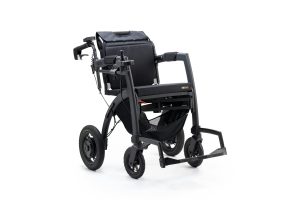Making Sense of Wireless Charging Standards and Compatibility
As technology continues to advance, one area that has seen a significant shift is the way we charge our devices. The days of tangled cords and outlets are becoming a thing of the past, thanks to wireless charging. This convenient method of powering up our devices eliminates the need for cords and allows for a clutter-free space. However, with the rise of wireless charging, there also comes a need to understand the standards and compatibility of this technology. In this article, we will dive into the world of wireless charging standards and compatibility, and help you make sense of it all.
The Evolution of Wireless Charging Standards
Wireless charging, also known as inductive charging, has been around for decades. It was first demonstrated by Nikola Tesla in 1891, but it wasn’t until the early 2000s that it started to gain traction in the tech industry. The Wireless Power Consortium (WPC) was formed in 2008, with the goal of developing a global wireless charging standard for all devices. They introduced the Qi standard, which is now the most widely used standard in the market.
Since then, there have been other organizations and companies that have developed their own wireless charging standards, such as the AirFuel Alliance (AFA) and the Power Matters Alliance (PMA). This has led to confusion among consumers, as devices that support different standards may not be compatible with each other. So, let’s take a closer look at these standards and their compatibility.
The Qi Standard
The Qi standard, developed by the WPC, has become the most dominant wireless charging standard in the market. It uses inductive charging, which requires the device to be in close proximity to the charging pad or mat. The Qi standard has been adopted by major phone manufacturers such as Samsung, Apple, and Google, making it the go-to standard for many users.
One of the key benefits of the Qi standard is its compatibility with a wide range of devices. As long as your device is Qi-certified, it can be charged on any Qi-certified charging mat or pad. This makes it convenient for users who have multiple devices to charge, as they can use one charging pad for all their devices.
The AirFuel Standard
The AirFuel Alliance, formed in 2015, is an organization that promotes the use of wireless charging and develops standards for the technology. They have two main standards – resonant and RF. The resonant standard allows for charging at a distance, making it possible to charge devices without the need for close proximity. The RF standard, on the other hand, allows for charging at a further distance but at a slower speed.
Currently, the AirFuel standard is not as widely adopted as the Qi standard, but it does have some major players on board, such as Dell and Intel. Devices that are compatible with the AirFuel standard can be charged on AirFuel-certified charging pads or mats.
The Power Matters Alliance Standard
The Power Matters Alliance (PMA) was formed in 2013 by a group of companies, including Starbucks and AT&T, with the goal of developing a wireless charging standard that could be integrated into public locations, such as coffee shops and airports. Their standard is based on inductive charging, similar to the Qi standard, but with a different frequency band.
The PMA standard is not as widely adopted as the Qi or AirFuel standards, making it less compatible with devices. However, some devices, such as the Google Nexus 4 and 5, are compatible with both Qi and PMA standards.
Ensuring Compatibility
With three different wireless charging standards in the market, it’s important to make sure your device is compatible before investing in a charging pad or mat. To do this, simply check the specifications of your device or look for the certification logo on the packaging. For example, if your device is Qi-certified, it will have the Qi logo on the packaging or in the specifications.
In addition, some charging pads or mats may have multiple standards, making them compatible with a wider range of devices. For instance, there are some charging pads that are Qi and AirFuel certified, allowing for compatibility with a variety of devices.
Conclusion
Wireless charging is becoming more and more prevalent in our daily lives, and understanding the standards and compatibility is crucial for a seamless experience. While the Qi standard is currently the most widely adopted, the AirFuel and PMA standards are also gaining traction. As technology continues to evolve, it’s important to stay informed and ensure compatibility when it comes to wireless charging. So, next time you’re in need of a charging pad, keep in mind the different standards and compatibility to make the most out of your wireless charging experience.










